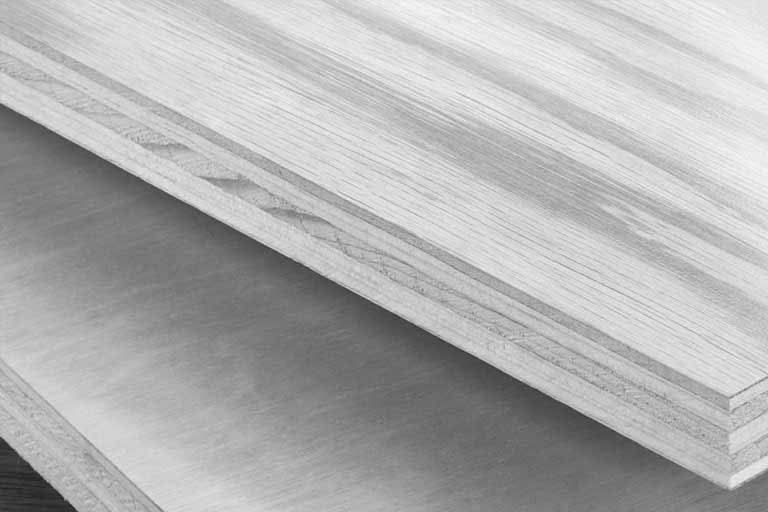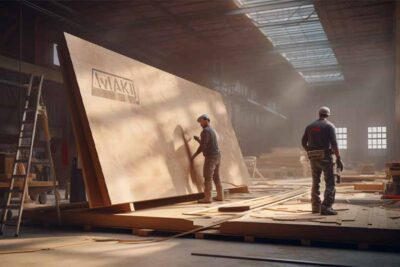
When Was Plywood Invented?
When Was Plywood Invented?
Contrary to popular belief, the discovery of plywood dates back to before Christ. Since then, plywood has been used in many different forms such as; film faced plywood, Hexa plywood, plywood slats, plywood grades, film faced birch plywood. Around 2800 BC, the Egyptians knew how to glue thin layers of wood onto thicker logs for decorative purposes. Over time, they discovered that a wooden curtain made by superimposing thin layers was more durable than a solid wooden curtain of the same thickness. This feature of wood was neglected until the 19th century, and finely cut wood slices were used as a covering element for decorative purposes only.
In 1830, Austrian carpenter Michael Thonet shaped very thin slices of wood with the help of steam, and then glued them together to produce different types of furniture. Over time, these pieces of furniture have proven to be much more durable than their counterparts made of solid timber. Because the combination of the expansion power of each thin flexible plywood layer is much higher than the expansion power of a single thick layer.
Film Faced Plywood
Plywood structures, called Hexa plywood or film faced plywood, are made from three or more thin flexible plywood layers of wood (plywood slats) bonded together with an adhesive. Each wood or plywood slats often join at right angles to the adjacent layer to reduce shrinkage and increase the strength of the coated piece. Most film faced birch plywood is manufactured in the form of large, flat hexagonal floor sheets used in building construction. Other pieces of plywood can be formed into simple or compound curves for use in furniture, boats, and airplanes.
- Plywood is used for the deck; generally, large ones are preferred. One of the biggest advantages of plywood is that it can be produced in the desired size.
- Especially beech marine exterior plywood is the most widely used plywood type for boat construction.
- Durable plywood models such as film faced birch plywood are among the plywood products that can be used.
Widespread Use of Plywood
Until the late 1700s, veneer pieces began to be cut entirely by hand. By 1797, the Englishman Sir Samuel Bentham had applied for a patent for the product using several machine coatings. Although the patent application is on plywood construction, it was first defined it as the concept of laminating several layers of veneer with glue to create a thicker part.
- With this patent application, especially Hexa flooring plywood; Many types of plywood, such as birch faced plywood, a UV coated plywood, were often used in the furniture industry.
- Although the patterned plywood is suitable for use in many areas, it took almost a century to be used in other sectors.
- In 1890, plywood, also called hexagonal flooring, became widespread by using plywood interior construction.
- In the following years, laminated birch plywood began to be used in important vehicles such as wagons, buses, and airplanes.
From Laminated Wood to Plywood
In addition to the fact that it has an increasingly common usage area, masters with a traditional understanding approached laminated wood in a cynical way. Since this situation reveals a bad image, laminated wood manufacturers have started naming this product plywood.
- In 1928, the first standard size 4 ft x 8 ft (1.2 m x 2.4 m) plywood sheets were introduced in the United States for use as a general building material.
- In the years that followed, improved adhesives and new manufacturing methods allowed plywood to be used for a wide variety of applications.
- Today, plywood has replaced many constructions and sawn timbers and plywood production has become a billion-dollar market worldwide.
The outer layers of plywood are known as the face and back, respectively. The face is the surface to be used or seen while remaining unused or hidden. The central layer is known as the core. The interlayers are known as cross bands in five or more ply plywood.
How Plywood is Produced?
As a raw material, plywood can be produced from hardwoods, softwoods, or a combination of the two. Some common hardwoods include beech, maple, mahogany, oak, and birch. For example, birch faced plywood that comes in the honey of common types of plywood is made from birch wood. Composite plywood has a core made from pieces of chipboard or solid lumber joined edge-to-edge.
Composite plywood is used where very thick layers are required. The type of adhesive used to bond the wood’s layers together depends on the application of the coated plywood. Softwood plywood sheets designed for installation outside of a structure often use a phenol-formaldehyde resin as the adhesive, due to its excellent strength and resistance to moisture.
Grades of Plywood
There are two broad grades of plywood, each with its own classification system.
- First Grade of Plywood: Construction and Industrial Plywood
Plywood in this class is used primarily for its durability and is rated by its capacity to be exposed to external factors and the veneer grades used on the face and back. The exposure capacity can be internal or external depending on the type of glue. Coating grades can be N, A, B, C or D. Class N has very few surface defects, while class D can have many nodes and splits.
- Second Grade of Plywood: Hardwood and Decorative Plywood
Plywood in this grade is used primarily for its appearance and is rated in descending order of resistance to moisture as Technical (Exterior), Type I (Exterior), Type II (Interior), and Type III (Interior). Face coverings are almost faultless.
Wholesale Baltic Birch Plywood
Our Baltic Birch Plywood Wholesale factory is one of the best plywood manufacturers and can produce plywood in any size you want. It is a world brand with the plywood we produce thanks to our expert technical team and personnel, and it is a plywood wholesale supplier all over the world, especially in the eastern region. For your plywood wholesale supplier needs, you can contact our company officials and get detailed information.





